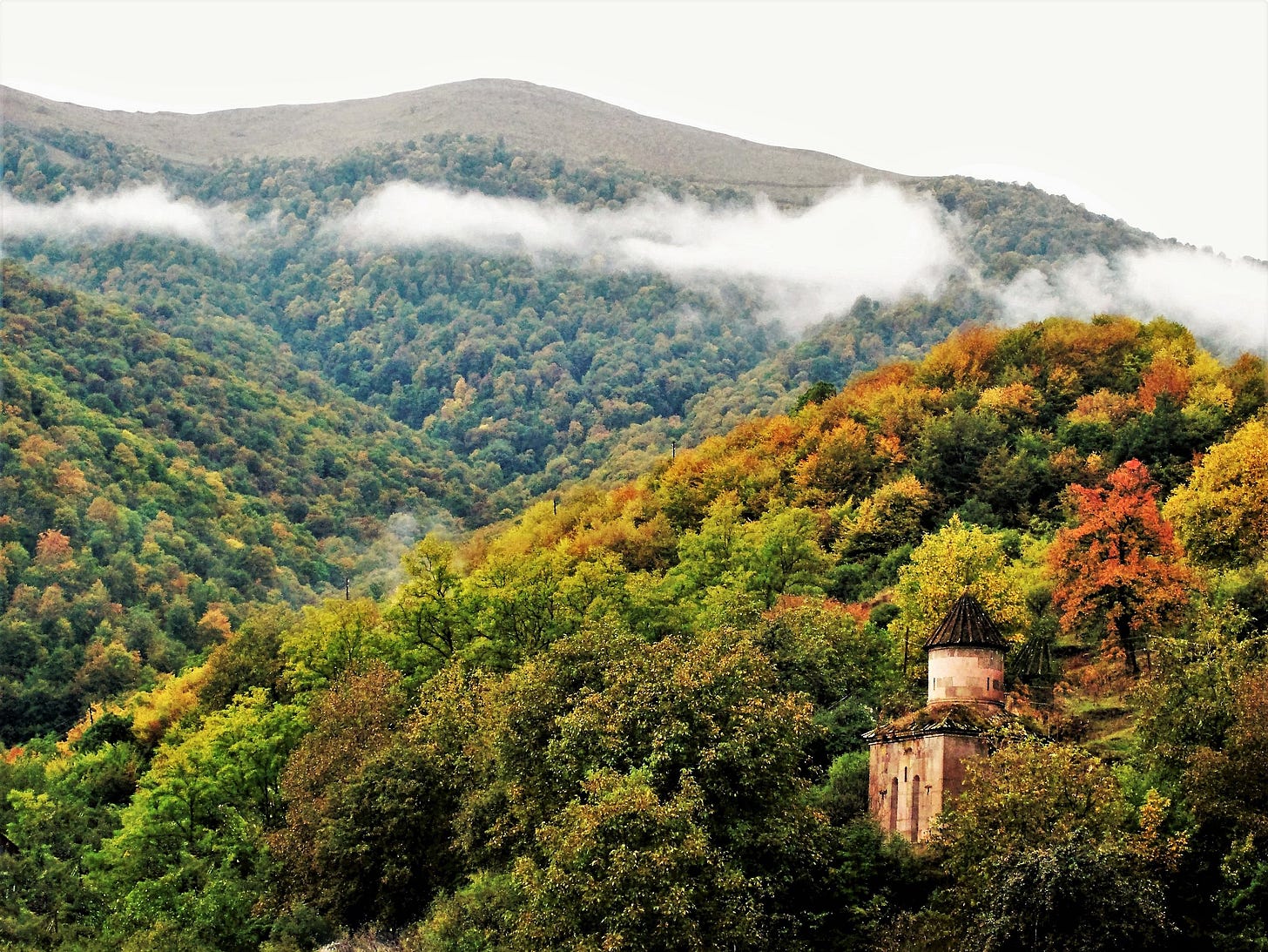The ‘Switzerland of the Caucasus’
A weekend in Dilijan, Armenia.
When Armenians wax lyrical about the beauty of their hills, I think of Dilijan. Nicknamed the “Switzerland of the Caucasus,” the spa town is nestled inside a national park in the Lesser Caucasus Mountains, with an eclectic mix of old, new and Soviet architecture surrounded by picturesque wooded hillsides.
The town of roughly 16,000 people projects an up-and-coming atmosphere in an otherwise struggling country, its crisp air scented by oak and pine, a welcome change from the capital Yerevan’s smog and low-octane gasoline fumes some 60 miles south.
Dilijan has been welcoming guests for centuries, especially artists and intellectuals. Many have been exiles, from the tsarist era to those fleeing Russian President Vladimir Putin’s regime today, along with refugees from Armenia’s Artsakh territories recently lost to Azerbaijan in the conflict over Nagorno-Karabakh.
The town’s hospitality has kept it vibrant, witnessed by various new developments. But you’ll also find traces of the communist era—faded concrete façades, low-slung apartment blocks—reminders of a more utilitarian chapter in Dilijan’s development. One Soviet project was the bottling of the town’s mineral water, locally known as the world’s second-best.
The semi-serious designation comes from a 1977 Soviet buddy comedy named “Mimino,” in which a truck driver boasts that Dilijan’s spring water is second-best only to San Francisco’s (home to a large Armenian diaspora). The movie’s widely quoted joke has developed into national myth; a monument commemorating the film now stands in the town square, with sculptures of the protagonists filling glasses from a flowing fountain.
The forests of the surrounding hills conceal architectural relics, some with storied pasts like the Haghartsin Monastery, about 20 minutes from town. Dating to the 10th-13th centuries, it was once a major center of learning and manuscript production. Its stone churches and intricate khachkars (carved crosses) rise ethereally from the greenery. Nearby, the Goshavank Monastery—founded in the 12th century by the scholar Mkhitar Gosh, author of Armenia’s first legal code—was home to a prestigious school and scriptorium. Another much more recent ruin, the abandoned Soviet House of Composers, languishes a day’s hike from Dilijan.
Once a week, visitors might spot bearded men with their headscarf-clad wives selling fresh milk and some of Armenia’s best-tasting pickled cabbage. They are the Molokans, members of a Russian spiritual sect whose ancestors were exiled here by the tsars. Today, they maintain their traditional way of life in the nearby villages of Fioletovo and Lermontovo.
Although Dilijan is worth visiting year-round, summer is when it really comes alive. Locals escaping Yerevan’s heat head here for the cool air and shady hiking trails. The shimmering waters of nearby Lake Sevan, one of Eurasia’s largest, lie a 30-minute drive east.
Ski resorts are slowly taking shape an hour’s drive away, but Dilijan remains better known for its slow, restorative pace. Accommodations range from cozy Airbnbs with balcony views to the more upscale EcoKayan Resort. For those seeking something even more local, family-run guesthouses can look like storybook homes.
Dilijan boasts several natural wine bars featuring wines made using traditional, small-scale methods. The Flying Ostrich, a sister venue to Yerevan’s trendy Dolmama restaurant, and Arm Food Lab, a sleek wooden coffeeshop reputed to sell the country’s best filter coffee, offer good dining options. For a more traditional but adventurous experience, head to the riverside Kchuch Restaurant for a bowl of khash, a hearty soup made with cow and sheep entrails. Best enjoyed in summer, it’s typically eaten on the riverside deck because of its pungent aroma. For a more refined take on traditional Armenian cuisine, head to Papanino Restaurant and try the manty—meat-filled dumplings made from pasta-like dough, fried to perfection and served in a rich yogurt and tomato sauce.
Dilijan hosts a wine festival in the summer and produces local liquor. Dilvados, a recently devised brandy distilled from pears and apples, is available in most restaurants. Strike up a conversation with a local resident and you may be invited to sample homemade vodka, also distilled from the area’s apples.
If a hangover eventually catches up with you, don’t forget the town’s second-best-in-the-world water for curing symptoms. Sip it as you relax on a classic Dilijan balcony, breathing the fresh mountain air and gazing out at the rolling forests and snowcapped peaks.
Aron Ouzilevski is a freelance journalist and English-language editor for DOXA magazine, a Russian exile media outlet. He was an ICWA fellow (2022-2024) based in Tbilisi, Georgia, reporting on Russian exile communities across the Caucasus, Europe and beyond.





Great piece.